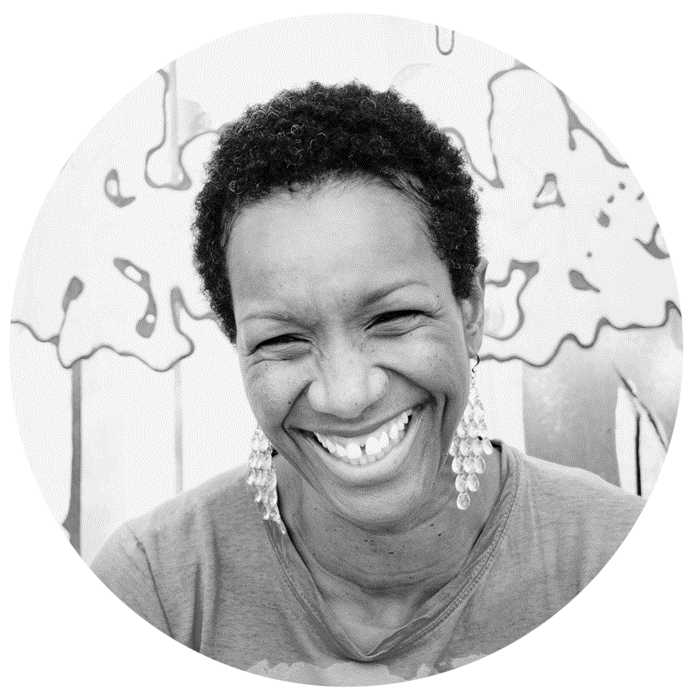BY MARY-ELIZABETH HARMON
Founding Mother, Chard & Stripes
For years, this was my all-time favorite story: I’m wasting my life doing this job.
But that was just a tale I made up—in reality, I was learning like crazy.
Still, I told my tale so much that I made myself sick and quit my job to recover my health, and cling to hope that I still had time to make a difference in this world.
Death and life are in the power of the tongue:
and they that love it shall eat the fruit thereof.
PROVERBS 18:21
So, quitting my job caused a ripple of difficult effects, but luckily, I got wise:
If stories I made up could plunge me into crisis, I could tell better ones to get myself out.
Our stories are like seeds: they produce matching crops. Just as oranges don’t grow from apple seeds, prosperity doesn’t grow from tales of woe, “true” or not.
In the Chard & Stripes Declaration of Prosperity, I said, “Words begin worlds,” and that we unintentionally—yet effectively—pass down our burdens through generations.
How?
By the stories we choose to tell.
By choosing narratives of oppression—real or imagined—we blind ourselves to prosperity.
The stories we tell match the evidence we see.
What we see drives what we believe.
What we believe drives what we do.
What we do drives our experiences and outcomes, …
which drive the stories we tell and on and on.

When I was a kid, I was transfixed by this drawing—it was strange that depending on where I put my focus, it was either a young or old woman, and I couldn’t see both at the same time for more than a second: one always won out.
The significance of all that was lost on me then, but it makes my point that the stories we tell—she’s young, she’s old; I’m prosperous, I’m oppressed—match what we see, which then hooks us into cycles that feel good or don’t unless we do something to break them.
The drawing also shows that the truth isn’t fixed and lies in the eye of the beholder:
It’s true that the drawing is at once of a young woman or an old one.
In his book The Seat of the Soul, Gary Zukav defines “truth” as “that which does not contaminate you, but empowers.” I’ve distilled “truth” into “food for the soul.”
Based on those definitions, my all-time favorite tale—I’m wasting my life doing this job—wasn’t the truth on different fronts: Despite my despair at work, I was adding skills and knowledge to my toolbox. But more than that, the story was disempowering and soul crushing.
But like I said, I got wise and started telling new stories to turn my life around, and my all-time favorite tale turned into this: I’m building an entrepreneurial empire.
And the more I told myself that story, …
Daydreamed about that story, …
And wrote down ideas that excited me and followed the breadcrumbs, …
The more I remembered that I loved to tell stories and a storytelling empire formed in my mind.
“Believing is seeing” is how the world truly works. Our beliefs aren’t always the truth, but seeds—stories—that often take hold and bear fruit, bitter or sweet.
To grow sweet prosperity, plant prosperity stories in the soil of your mind.
There are some tricks to telling fruitful prosperity stories:
Start stories with “I am” to yield the biggest crops.
The words “I AM” activate our innate creative power, so be careful with what you hitch to that phrase. “I am wasting my life doing this job” grows bumper crops of misery. But “I am building an entrepreneurial empire” bears fruit like Chard & Stripes.
Tell stories in the here and now.
Romans 4:17 says, calleth those things which be not AS THOUGH THEY WERE, not as you hope they will be. “I’m building an entrepreneurial empire” is happening now, versus “I’m going to build an entrepreneurial empire” in a future that may never come.
Stretch, but not too far.
The key to prosperity stories is to improve on your reality, but not so much that your mind can’t believe it could happen. I didn’t go from wasting my life in my jobs to building an empire in one jump. I got there in by telling a series of improved stories I could swallow.
Create urgency without doubt.
Prosperity stories are jazzed-up goals. Like other goals, deadlines can make for faster success. But had I said, “I’m building an entrepreneurial empire by next year” my mind would have rejected that story outright. Add deadlines if they help. Leave them out if they don’t.
Have fun, fun, fun!
Fun is a fast track to prosperity. For starters, it can break you free from negative ruts. More importantly, fun makes for great prosperity stories because it lets your mind run wild under the guise that you’re just joking. But some of what you write will inspire you into action and yield fruit.
Mmm...
Given their transformative power, we’ll be diving deeper into prosperity stories.
Now, I’ll end with this:
Prosperity stories feel good.
When you feel bad, listen to the stories in your head, especially ones starting with “I am.”
Step 1 is to stop telling tales that worsen your moods and emotions.
Step 2 is to turn your tales of woe into the truth: stories that empower you or feed your soul.
Step 3 is to ask a friend or two to lend their ears:
Though it kind of just happened, I have two friends who point out my crazy talk and I do the same for them. But that’s not a job for everyone:
I also had a friend who watched my speech like a hawk, and I noticed I began avoiding her company.
OK, y’all, have fun concocting some new realities 😊

Dr. Mary-Elizabeth Harmon is a scientist turned storyteller and Founding Mother of Chard & Stripes, a “school” of prosperity making and word-of-mouth marketing platform for businesses in food, fashion and more. Subscribe to her weekly newsletter here.
